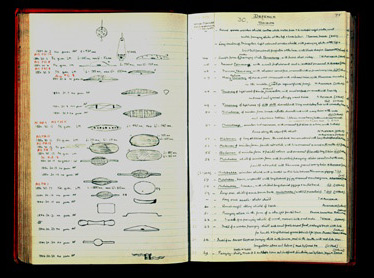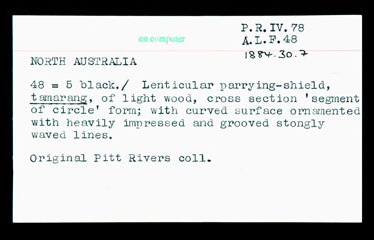
Documentation of Collections in the Museum
Outline of the Museum in the 1990s
More recent displays at the Museum
Before computerisation, information about objects in this Museum
was held in two ways: hand-written Accession Books, and Card Catalogues
Accession Books give the basic information about the object. Who had given or sold the object to the Museum, when and with what other objects, where it was from [the provenance], what it was, and how much it cost (if it was purchased). They were generally written when the object was first received in the Museum.

Two card catalogues were compiled during the Second World War from the accession books. In one catalogue, the cards are organised by provenance (geographical or tribal); in the other, they are sorted by use or type, e.g. Weapons, Pottery, Clothing, etc. Each object in the Museum therefore has two cards. The same information about each object is held in both card catalogues.

In 1985, the Museum installed a computer database for object records. All accessions since 1985 have been entered directly on to this database. The pre-1985 accessions are being systematically transferred to the database; in the process, the data is upgraded (i.e. the information pertaining to each object is often expanded and improved). This retrospective computerisation has been tackled on a project basis, prioritising the most heavily used and researched collections, including the founding collection given by Lt.-General Pitt Rivers in 1884. Other areas of the collection with computerised catalogues include musical instruments, and North American and Australian collections. Some 200,000 objects still need to be transferred from the manual system to the computer. A similar programme has been undertaken on the Photographic Collections. This transfer of data greatly improves collections management, research and public access to the collections.